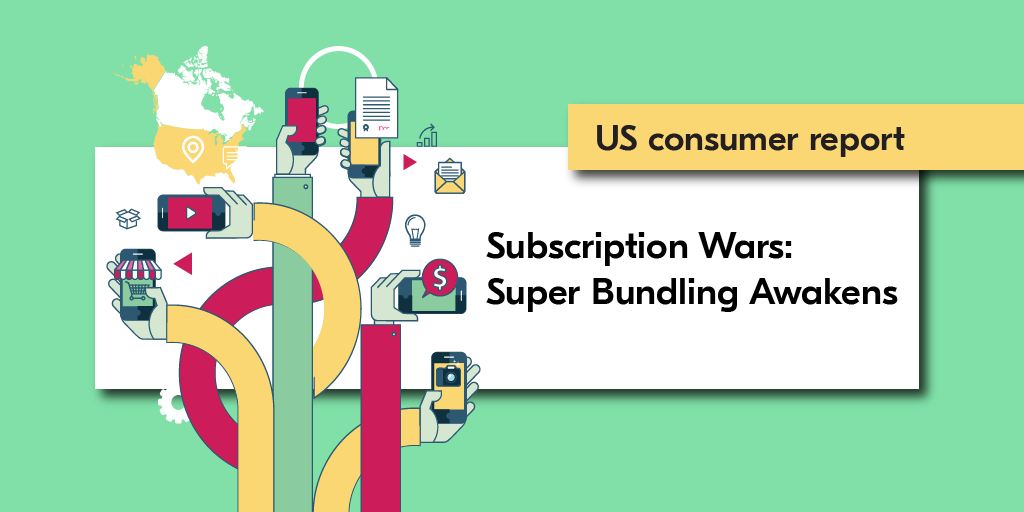In the US, the typical subscriber now has 4.5 subscriptions — everything from video and movies, retail, and music to home tech, education and food boxes. Subscription services are no longer a ‘nice to have’ but a way of life, something we almost subconsciously commit to.
But while their subscriptions are piling up, so too are people’s concerns about how best to manage them. Over a third (35%) of subscribers claim they don’t actually know how much they are spending on subscriptions, and a similar number (36%) pay for subscriptions they never use.
These are just some of the findings revealed by a major new study from Bango of over 5,000 US subscribers. The latest Subscription Wars report — free to download now — takes the temperature of the subscriptions industry and examines the major factors shaping the present and the future of the sector. It reveals game-changing insights that will prove highly valuable to content providers, telcos and other interested parties looking to make strategic decisions about subscription models.
The full report — Subscription Wars: Super Bundling Awakens — is available to download for free now.
US consumers want control of their subscriptions
What’s clear from the findings is that the subscriptions economy — which we predicted would go stratospheric in 2024 — is at risk of becoming a victim of its own success.
As people sign up for an ever-expanding ecosystem of content and services, keeping tabs on all their subscriptions is becoming a challenge — even an irritation. Almost half (49%) of subscribers say they are annoyed they can’t manage their subscriptions in one place, and over two-fifths (44%) say they find it too hard to keep track of where and how they even signed up for them.
The study reveals that for subscribers, the ideal prize is the ability to be in control — and have flexibility over — what subscriptions they have at their disposal.
Nearly three-quarters of US subscribers (73%) want to access and manage all of their subscriptions, while 69% say they prefer being able to pick and choose their own combination of deals rather than a pre-packaged bundle.
The report offers further findings and expert insight around this issue, including details of just how far subscribers are willing to go to achieve this level of flexibility. For example, six in ten (61%) say they would pay a higher monthly mobile/internet bill if subscriptions were bundled in a way that offered such flexibility and transparency. For more on this read here.
Super Bundling: the ideal solution
What the study reveals is that subscribers are looking for a solution that addresses their concerns over how to manage the admin of multiple subscriptions and their appetite for services.
Almost half (47%) would sign up to more subscriptions if they had a content hub available, and 54% would spend more time using those subscriptions if they had access to such a hub. A further 46% say they’d actually leave their current TV, broadband or mobile provider if this service became available elsewhere.
As our CEO, Paul Larbey, comments:
“Subscribers want to jump between different content and services but they don’t want the admin headache of managing multiple accounts and paying multiple bills. With the rise of Super Bundling in 2024, we’re expecting to see that headache disappear.
“At the same time, these all-in-one platforms will help drive new revenue for cell phone providers and allow subscription services to share users rather than fighting over them. It’s a win-win scenario for businesses and subscribers alike.”
To read the full details of these, and many more issues relating to the US subscriber economy, you can download your free copy of Subscription Wars: Super Bundling Awakens here
